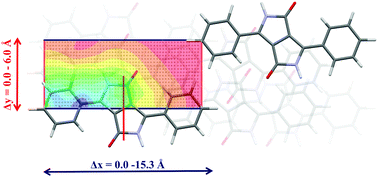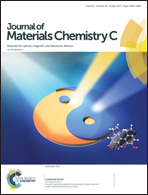Exploring structure based charge transport relationships in phenyl diketopyrrolopyrrole single crystals using a 2D π–π dimer model system†
Abstract
Crystalline phenyl diketopyrrolopyrroles are often overlooked as charge transfer mediating materials in optoelectronic applications. We report an experimentally ratified two dimensional π–π model dimer system dispelling previous misconceptions regarding the potential of these materials as organic semiconductors and that will enable researchers to screen and predict charge transport potential solely on the basis of their single crystal derived π-stacking architectures. In testing our model system versus the available database of phenyl diketopyrrolopyrrole single crystal structures we reveal that these materials are characterised by intrinsically large thermal integrities and in many cases large charge transfer integrals, not solely restricted to dimeric interactions exhibiting close intermonomer arrangements and bearing low torsion of the core phenyl rings. This study will be of significant interest to the increasingly large community engaged in the quest to engineer π-conjugated organic based semiconducting devices and particularly those employing crystalline diketopyrrolopyrroles.



 Please wait while we load your content...
Please wait while we load your content...